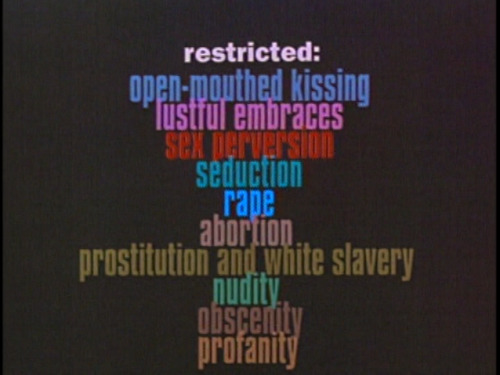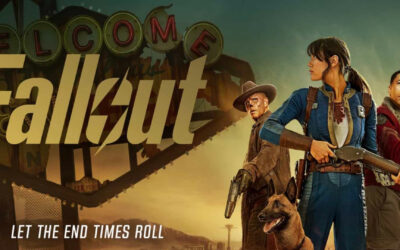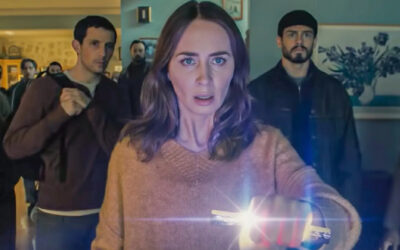A Few Words From Our Ms. Palmer
“What a piece of shit! No one’s gonna see this crap!” — Actress Betsy Palmer aka Pamela Vorhees


The original Mean Dead Girls
The Best Form of Flattery
When Steve Miner and Sean S. Cunnigham set out to make a quick rip off of Halloween they had no idea they would unleash the most enduring horror franchises ever. Even its star and only real celebrity name, Betsy Palmer, dismissed the film as trash until its overwhelming success gave her more fame than all of her previous film and television work combined. Palmer took the role as the now iconic mother of Jason Vorhees because she needed money for a new car. It wasn’t because she believed in the material. Palmer also gets credit with the filmmakers for turning the genre a bit on its ear and making the killer a woman as well.
The film gets away with a number of cheats and that’s because of its clever manufacturing. To understand why the original did so well, and fans turned an indifferent shoulder to its much more expensive and slicker 2008 remake, the horror viewer needs to look at the time surrounding the release of the film.
It was 1980 and the liberal 70s and Watergate, economic turmoil and Vietnam left the country scarred and cynical. It’s no secret that horror films thrive during bad economic times. Jaws capitalized on this concept. While not a horror film in the true sense of the genre, the shark movie is an economic film. The real villain is not the shark, but the mayor and his council cronies that wanted to keep the beaches open despite the dangers to bring in the almighty tourist dollars. Jaws is an economic horror film. The town fears financial ruin over the shark.
With slashers like Halloween and Friday the 13th, the fear is the killer. Sex is the fuel of the killing engine, but economics are non-existent in the themes of these films.

Six little Indians at Camp Crystal Lake…including almost famous Kevin Bacon
The Reagan 80s
Ronald Reagan was elected president in 1980, ushering in a new era of “American Renewal.” The Jimmy Carter years saw depression, malaise, high fuel prices and the United States held by the balls in Iran. 52 American hostages languished in captivity for 444 days, and the last half of Carter’s miserable term as president. Ronald Reagan was a new sheriff in town and the Russian and Middle Eastern baddies better take notice. Only an hour after Reagan was president, the hostages were released and Reagan kicked off a decade that will be defined by his presidency.

Reagan shakes Carter’s hand as America takes a new turn in 1980
This will be ironic as conspiracy shadowed the “convenient” release of the Iranian Hostages. All things come full circle, and by the end of the 1990s, conspiracy permeated horror films again and the straight forward slasher would evolve into a more complex type of story.
Conservative and Liberal
This is not a political article, but the political and social climate can’t be denied. Americans wanted a change at the start of the 80s and they showed that in the voting booth and at the boxoffice. The heavy handed horror films of the 1970s would change into something that allowed them to weave through the new social climate. The late 70s and early 80s saw a revival in entertainment of all things 1950s. Our TV shows reflected this with Happy Days, Laverne and Shirley and number of sitcoms that were throwbacks to the 1950s family sitcom style. Family Ties was the new Leave It To Beaver and its breakout star, Michael J. Fox would achieve boxoffice stardom in a 1950s valentine, Back to the Future in 1985. Throw in Grease, Animal House (okay, early 60s), The Wanderers, Hollywood Knights, Porky’s and crapload of 1950s films you get the idea.
In theaters it was the 1950s meet modern sex appeal. Imagine Laverne and Shirley with lots of boobs.
America went through the 60s Love Decade that gave us The Pill, women’s liberation and sexual abandon. It’s futile to put the genie back in the bottle on something like that. Our music changed, our films changed and like it or not, sex had moved to the forefront after decades of repression and cinematic dick teasing since film first hit the screens.
The 60s also gave us the “opposite reaction” to the 50s with the death of JFK, King, and Bobby. Add to it the Civil Rights issue that had been simmering since the first African slave was brought to American shores and you had quite a contrast. All of this would show in our popular culture.
While Americans wanted a return to 1950s “family values” they also wanted their titillation but didn’t want to be open about it. It’s kind of like a wedding. The parents of the bride are so happy to see their daughter so beautiful on “her day.” What they don’t want to think about is “her night.” They know what’s going to happen but they just don’t want to talk about it. So everyone pretends and dresses up the wedding as really one big, expensive opening act for the romp that usually follows after the bride and groom say goodbye to the guests.
This is the way horror weaved through the obstacle course of the 1980s.

Just the right balance of sex and violence mainstreamed horror in the 1980s. The underwear would have to change, though.
“X” Marks The Spot
One of horror’s worst enemies is the “X” rating. It’s more worse than any religious agenda. Religious zealots have no clue that studios love the press and boycotts drive more people to the film out of curiosity. A perfect example is Silent Night, Deadly Night, a total slasher ripoff that used the gimmick of a psycho in Santa costume to drum up its business. Its not a good film but thanks to the pious religious right pawns, it became a success at the boxoffice and spawned several sequels. The film would have come and gone with nary a blip on the boxoiffce radar if it had been left alone. I sometimes wonder if studios deliberately set these people up to be their own little marketing machines.
Many distributors did not carry an “X” film to general theaters as the rating was reserved for porn and gave off a negative context for a general release film. Today the “X” has been replaced by the much classier “NC-17” rating, but it’s really the same thing. The “X” rating was so powerful that George A. Romero backed off his stance with 1979’s Dawn of the Dead and made the necessary cuts to bring it down to an “R”. The same was done for Dario Argento’s Suspiria. The Exorcist and the original 1979 classic, Alien. All made cuts to avoid the “X” rating, and are considered some of the most important films of the horror genre (Yes, Alien is more horror than science fiction).

Halloween got away with almost no blood and while the nudity by today’s standards is nothing, it was considered just a tad racy at the time. Likely the original 1978 film would receive a PG-13 rating today. Friday the 13th wanted to give what Halloween did not. While terror was its driving force, the filmmakers wanted to sex and blood up their movie because they felt that audiences were craving and demanding more. Their first smart move was to hire Make-Up Artist legend Tom Savini to render the effects and that alone allowed a home run.
Would someone just give Savini his Lifetime Achievement Oscar and get it over with? His mark on the horror genre and film industry is indisputable. He’s a modern day Jack Pierce.
Tom Savini
Savini is an inventive artist with a wild imagination that set the standard for trauma and violent effects. Perhaps it’s no coincidence that he served in Vitenam and honed his craft there. The meatgrinder war dimished “the good fight” mentality of the previous generation. Savini came from a generation caught fighting a war few could make any sense of. The cynicism that rose up from this time was already buoyed by the senseless deaths of JFK, MLK and RFK.
Savini’s work on the original Dawn of the Dead is one studied to this day and he is one of the few artists, along with Rob Bottin and Rick Baker, whose work bears its own signature. Savini not only created all of the kill effects but designed the iconic image of the young hydro cephalic Jason Vorhees in the original Friday the 13th.

Tom Savini with some kid.
The formula worked and avoided the X-rating by embracing the genre. The kills are almost designer label. They’re a “Savini.” Where Herschel Gordon Lewis and other gore films focused on entrails splayed everywhere, severe torture and rape (the precursor to the slick torture porn films of late) Friday the 13th gives you its violence in quick, slick flashes and never goes down the torture porn route. It also manages to embrace the conservative moral attitude toward sex in the 1980s: immorality will deliver bad things. So the theme becomes almost righteous in a way: have wild, uninhibited sex without marriage…die a gruesome and deserved death because its the Lord’s way of sending you a message.

She axed for it…
Have Sex and Die

Spot the virgin.


A boy’s best friend is his mother.
I’ve made the argument in an open letter to New Line Cinema, that a Jason vs. Tommy Jarvis spinoff series would be boxoffice gold. I still stand by that. I don’t know if it classifies as Cynema if it’s done correctly. It could be an engaging TV series as well. However, the cynical practice of reboots, remakes and repackagings will likely encompass this as well.
Listen to my Cynema podcast found on iTunes, YouTube, Stitcher, Spotify and iHeart Radio.
















